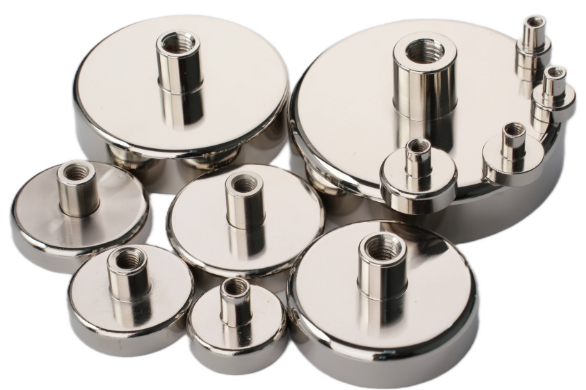Features & Characteristics of Neodymium Magnets
Neodymium magnet is also called the NdFeB magnet. Neodymium magnet has excellent magnetic properties and is widely used in electronics, electrical machinery, medical equipment, toys, packaging, hardware machinery, aerospace, and other fields. In this article, we will take a close look at the features and characteristics of neodymium magnets.
 Features & Characteristics of Neodymium Magnets
Features & Characteristics of Neodymium Magnets
1. Why are neodymium magnets so strong?
Neodymium magnets are very strong because of their high saturation magnetization and resistance to demagnetization. Compared with ceramic magnets, though neodymium magnets are more expensive, they pack a powerful punch! A major advantage of the NdFeB magnet is that it allows you to use a smaller magnet for the same purpose as a larger one. This makes it possible to reduce the overall cost as the overall size of the equipment is reduced.
2. How long do neodymium magnets last?
If the physical properties of the neodymium magnets remain unchanged and they are not affected by demagnetizing influences like high temperature, reverse magnetic field, radiation, etc., the loss of their flux density may be less than 1% in 10 years.
3. What are the main characteristics of neodymium magnets?
Compared with other rare-earth magnetic materials like SmCo magnets, neodymium magnets are much less susceptible to cracking & chipping and less expensive. However, neodymium magnets are more sensitive to temperature. Therefore, SmCo magnets may be a better choice for critical applications, as their magnetic properties are very stable at high temperatures.
4. What grades & shapes are available for neodymium magnets?
Grades N30, N35, N38, N40, N42, N48, N50, and N52 are available for all shapes and sizes of neodymium magnets. Stanford Magnets stocks these magnets in various shapes such as disc, bar, blocks, rods, and rings. Not all neodymium magnets are displayed on this site, so if you do not find what you need, please contact us. Stanford Magnets can also customize neodymium magnets to meet your requirements, so just send us your special request and we can help you find the most economical solution for your project.
5. What are some common applications for neodymium magnets?
Neodymium magnets enjoy a broad range of applications such as microphones, headphones and speakers, hard disk drives, pumps, bearings, the MRI scanners, electric cars, high-performance motor and actuators, magnetic therapy, anti-lock braking systems, DIY fixed furniture, and POP displays, etc.
6. What is the optimal temperature for a neodymium magnet?
Without careful design of the magnetic circuit, we recommend that neodymium magnets should not be used at temperatures above 130℃. However, if you plan to use neodymium magnets above this temperature, please contact us to discuss your application with our engineers.
7. Do neodymium magnets need surface treatment?
The answer is yes. If neodymium magnets are not protected by surface coating, such as electroplating, they may rust under wet conditions.
8. What is the common method of assembling neodymium magnets?
We often use "super glue" such as Loctite 325 to assemble neodymium magnets into products. As with all bonding applications, we need to ensure that the bonding surface is clean and dry for best results before bonding.
Conclusion
Thank you for reading our article and we hope it can help you to know the features and characteristics of neodymium magnets better. If you want to know more about neodymium magnets, we would like to recommend you visit Stanford Magnets for more information. As a leading magnet supplier across the world, Stanford Magnets has been involved in R&D, manufacturing, and sales of neodymium magnets since the 1990s. It provides customers with high-quality rare earth permanent magnetic products, and other non-rare earth permanent magnets at a very competitive price.















